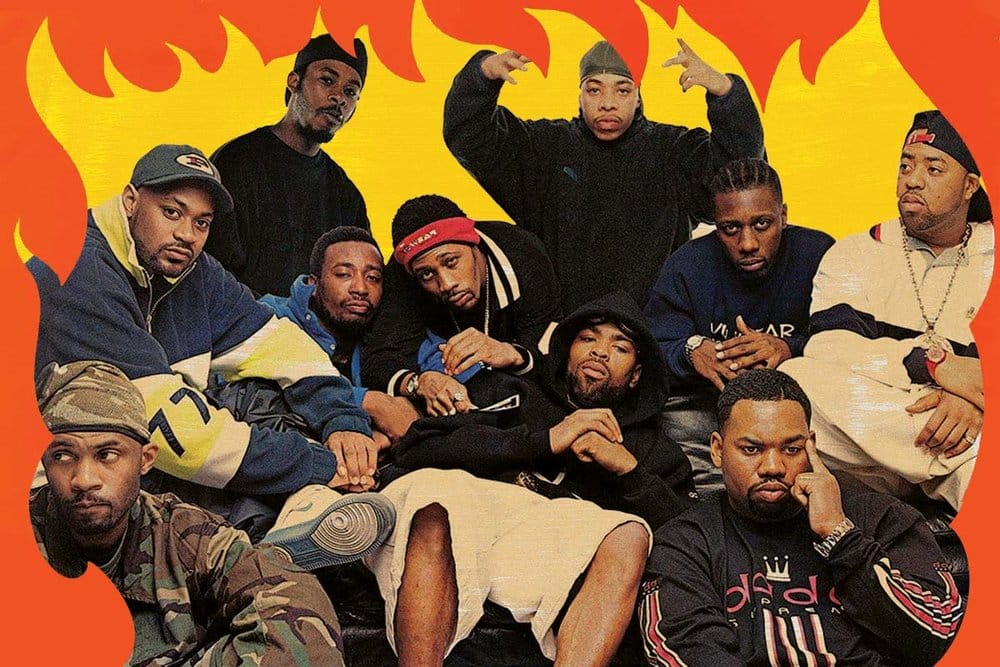What Wu-Tang Can Teach You About Building a Business Empire

"Cash Rules Everything Around Me. C.R.E.A.M. Get the money. Dollar dollar bill, y’all."
– Wu-Tang Clan, 1993
Most people hear that line and think of hustle. But I hear strategy.
I recently read 7 Powers by Hamilton Helmer. It’s a book about how businesses build lasting success not just by getting lucky, but by building something called power.
Instead of giving you another dry book review, I thought… what if we learned it the Wu-Tang way?
Because if anyone knew how to turn hustle into an empire, it was the Clan.
Let’s break it down:
Scale Economies
“Started on the block, hustlin’…”
Definition: As you grow, your average costs go down because fixed costs are spread across more output.
In business: Walmart negotiates better prices with suppliers the bigger it gets. Netflix spends a ton upfront to make content but every new subscriber reduces cost per viewer.
Wu-Tang version: Their first album was made on a tight budget. But once it popped, the economics changed. RZA used the same studio, same engineers, same equipment and cranked out 9 solo albums across multiple labels. More output, lower cost. They scaled their brand without scaling their expenses.
Takeaway: Scale doesn’t just mean size it means systems. Wu-Tang scaled smart.
Network Effects
“Wu-Tang is for the children.”
Definition: A product becomes more valuable as more people use it.
In business: Think Facebook, WhatsApp, and LinkedIn. You join because others are there. More users = more value.
Wu-Tang version: Each member’s solo project is linked back to the Clan. Fans of GZA might discover Raekwon. Then Method Man. Wu-Tang became more than a group they were an ecosystem. The more fans joined the movement, the richer the experience. Inside jokes, mythology, and shared language (“Shaolin,” “C.R.E.A.M.,” “Protect Ya Neck”).
Takeaway: Wu-Tang created a cultural network effect. Being in the know made you part of something bigger.
Counter-Positioning
“We ain’t like them industry cats…”
Definition: You adopt a strategy that Established players can’t or won’t follow — because it would hurt them.
In business: Netflix counter-positioned against Blockbuster. They shipped DVDs, then streamed while Blockbuster stuck to physical stores. To follow, Blockbuster would’ve had to blow up its model.
Wu-Tang version: The industry signed groups under one label. Wu-Tang flipped that. They signed the group to one label (Loud Records) but allowed each member to pursue solo deals with competing labels. No one had done that. The industry couldn’t copy its labels and didn’t want to collaborate that way. It was too risky for them, too innovative.
Takeaway: They didn’t just disrupt the music they disrupted the business model.
Switching Costs
“Once you’re in the Clan, you stay in.”
Definition: When it becomes too costly financially, emotionally, or practically —for users to switch to a competitor.
In business: Microsoft locks you into Office. Apple makes switching from iPhone feel like you’re losing a limb.
Wu-Tang version: Wu-Tang didn’t just make music they built identity. They created lore (Wu-Tang vs. Shaolin), language, and philosophies. If you were a Wu fan, you weren’t just a listener. You were a disciple. Switching to a shiny new rapper felt fake like abandoning the code. Their fans weren’t casual. They were devoted.
Takeaway: True loyalty isn’t built on hype. It’s built on meaning. That’s what creates stickiness
Branding
“That W? It’s sacred.”
Definition: When people are willing to pay more or choose you just because of your name.
In business: Nike doesn’t just sell shoes. They sell belief. People buy Apple not just for specs but for the feeling.
Wu-Tang version: The "W" logo became a stamp of quality, culture, and street credibility. Fans didn’t even need to hear the song. If it had the “W,” they trusted it. From fashion to video games to TV the brand expanded far beyond music.
Takeaway: A great brand isn’t just recognized it’s felt. Wu-Tang’s brand was emotional capital.
Cornered Resource
“RZA is the architect.”
Definition: You have exclusive access to a resource others can’t replicate — talent, IP, relationships, data.
In business: Tesla has patents, battery tech, and Elon. Pixar had Steve Jobs + Disney deal + proprietary software.
Wu-Tang version: RZA had a unique ear gritty, cinematic, and spiritual. No one else could make those beats. The group also had raw, diverse MCs lyrical swordsmen with distinct voices. That combo? Unmatched.
Takeaway: Talent is a resource. And when you corner it as Wu-Tang did you build something others just can’t copy
Process Power
“36 Chambers wasn’t an accident.”
Definition: Unique internal processes that create consistent, superior results — and are hard to copy.
In business: Toyota’s lean manufacturing. Amazon’s relentless customer obsession. Not just culture but operating systems.
Wu-Tang version: RZA created a playbook:
- He chose who rapped first, second, last.
- He oversaw beat selection, mixing, and pacing.
- He treated albums like martial arts films with arcs, themes, and tension.
Members respected the order. There was discipline. That system led to consistent excellence itsacross group and solo projects.
Takeaway: The process is invisible to outsiders but it’s the engine. Wu-Tang had a factory for greatness.
Final Thoughts: Legacy is Built on Power
Wu-Tang didn’t just rap. They built a strategic fortress. They leveraged scale, networks, positioning, loyalty, branding, resources, and systems the same tools Amazon, Google, and Netflix use.
When Hamilton Helmer talks about the 7 Powers, he’s showing us what separates momentary success to lasting dominance
Wu-Tang wasn’t just for the children. They were for the future and they built a playbook every entrepreneur should study.